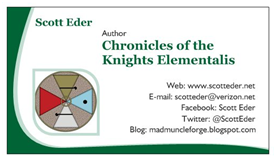We’ve all seen the contagion movies—a hideous, killing plague threatens to wipe out humanity unless the tireless doctors discover a cure before it’s too late. In order to develop the miracle serum, they have to trace the source of the disease. They have to find PatientZero, find out what he did, where he went, where he came from, who he met, what he ate, what brand of underwear he preferred, and what he read before contracting the virus.
Alright, so maybe I stretched that a little. They never checked his drawers. But the concept of a single spark igniting a fire that spreads from person to person through contact is extremely interesting. Word of mouth is still the best promotion out there. Readers talk, and not just to the world through their formal reviews on Amazon or their blog posts, but to their co-workers, their family members, and their friends. Each person they talk to is a potential reader. And each person they talk to is a potential reader. It’s an expanding universe of potentiality that could start with a single spark, a conversation with a person in your own neighborhood, igniting a viral explosion that doesn’t kill the chain, but introduces them to a great new story that captivates hearts.
Readers are everywhere. They don’t just cluster together wherever books are sold, or in coffee shops. No. They are everywhere. Supermarkets, hair salons, doctor’s offices, etc. Find them. Talk to them. Spread the word. Find ReaderZero.
Before you open your front door and step outside, make sure you have your business cards in your pocket. Business cards are not only for corporate drones. They are a branding tool, an informational souvenir of your meeting. If you want people to take you seriously and also have something to remember you by, hand them a business card. They are cheap and simple. Here’s mine:

It’s got my symbol, title, and contact information. Neat, attractive, and uncluttered. You can make them yourself or order 250 online for less than $20. Do it.
Like I said, readers are everywhere. So when I say take your cards with you when you step outside your door, I mean it. Take them everywhere. Here are three recent, personal examples to illustrate why this is important.
I went to the dentist yesterday. Yuck, right? Damn straight. It wasn’t a six month cleaning, either. It was crowning/filling nastiness totally devoid of Awesome…until the end of the procedure. The dentist was cool. The Licensed Dental Assistant was super nice. The numbing, drilling, and molding sucked, but wasn’t horrific. As I got ready to leave, the Licensed Dental Assistant picked up the book I’m currently reading, Wool, by Hugh Howey, and checked it out. She asked if it was any good. Of course I told her it was. She skimmed the back cover and said she was looking for something new to read.
This, my friends, is what’s called a perfect setup.
I told her Wool was good (Actually it’s really, really good), but she should try my book.
That’s when I got the wide-eyed stare. “You’re book!?” Yep. I whipped out a card, and gave her the elevator pitch. By the time we reached the payment desk, she assured me she’d buy my book. What started out as a mundane trip to the house of horrors ended on a wonderful note.
Something similar happened at the Veterinarian’s office (the doghouse of horror?) I took my dog in for her semi-annual exam. In between the “She’s so cute”s and the “You’re such a good girl”s, the Vet asked if I had been doing anything fun. Well, yeah, kinda. Now that you ask…boom! I whipped out a card, and gave her my elevator speech. As it turned out she was also writing a book. We talked about the craft for a few minutes then she said she’d buy a copy for all the people working in the office. Not too bad for a trip to the vet.
While the prior examples had direct setups, sometimes you have to give Fate a swift kick in the butt to make things happen. Develop your own opportunities.
I coach bowling. I’m there for the kids, but when I see someone reading, I have to know what it is. At practice the other day, one of the bowling moms sat by herself reading a book. I asked her a simple question, “So…whatcha readin’?” The answer led to a conversation where I could, without sounding pompous or overbearing, pitch my book and win over another reader, several readers as it turns out. Other parents listened in and participated in the conversation.
Anyone of these readers could turn into ReaderZero, the one who spreads the word, the one who ignites the fire, the one who starts the viral chain.
Be open. Be ready. Be bold.



